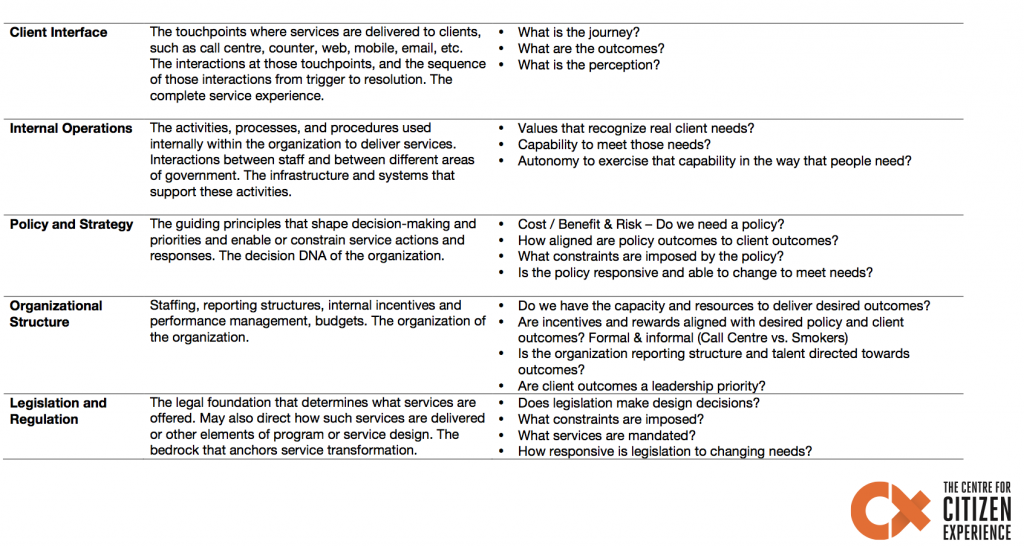Public service design and innovation often focuses on the solution – the novelty of a new app, website, or process drives attention and gets people excited. But to successfully deliver those solutions requires aligning the different layers of government to actually execute.
Service architecture is a framework for thinking about how the different layers of government need to align for effective service delivery. My friend and colleague Alex MacLennan started talking about service architecture with me in 2012, and we’ve been riffing on the idea since then.
The layers include:
- The Client Interface
- Operations and Infrastructure
- Policy and Strategy
- Organizational Structure and Culture
- Legislation and Regulation
I’ve put together a worksheet that outlines key questions for each layer (thanks to Blaise Hébert for talking through the questions).
We never have control over all of these areas – but we need to pay attention to each level to see things that can block or enable new service innovation. We’re using different versions of this model to help find collaborators, manage early expectations, and then to work together with other areas in government to realize service improvements. One way to do that due diligence is to think about where each of these layers affects the citizen journey – at each stage, what are the needs and enablers for great service across these layers?
The model is a work in progress – it’s not perfect – but it’s helping us work across the entire organization in a more systemic way to see successful service innovation. I’d love to hear your thoughts and ideas about how to use it and what else it can include.

